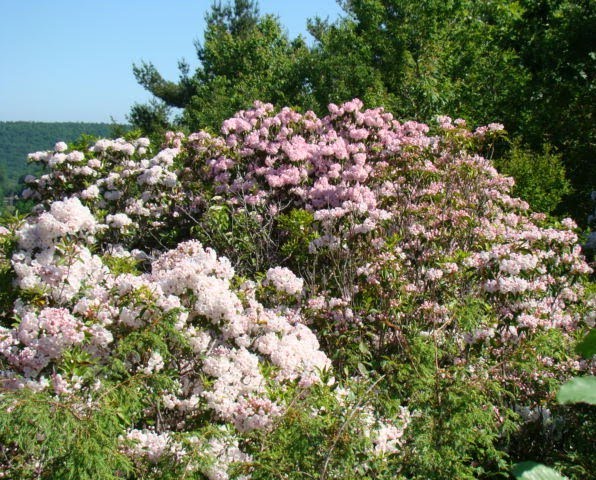
General Information
Burning Bush is listed as an invasive species in Connecticut, although there are certain cultivars that have not been studied to determine if they are as invasive as the species form. It is native to Asia and was introduced to North America and Europe as an ornamental. It can slowly mature to 15 to 20 feet tall by 15 to 20 feet wide. This deciduous shrub has been over utilized in the landscape due to its showy, bright red display of color in fall.
Plant Habit and Form
Burning Bush is a tough shrub with a rounded, flat -topped form. It has opposite leaves that are 1 to 3 inches long with fine marginal serrations. Dark green in summer, the leaves turn a brilliant purplish red to scarlet in autumn. The branches have long, corky wings along the stems. The trunk is brown and slightly fissured.
Growing Requirements
Burning Bush prefers sites with moist, slightly acidic, well-drained soils in full sun. But it is adaptable to other conditions such as clay soils, shade, high heat, drought, and pollution. It can dominate understories in small ravines, shady valley slopes, north-facing hillsides, and tolerate elevated levels of methane in landfill sites. It is hardy in zones 4 to 8.
Flowering and Fruiting
Pale yellow-green, tiny inflorescences appear in late May and early June. They are usually inconspicuous, hidden in dense expanding foliage. The fruit, 1/2 inch long capsules, follow the blooms and contain 4 seeds within each capsule. They ripen in September but are concealed in the fall foliage.
Pests and Diseases
Euonymus scale can pose a problem for Burning Bush.
ID Tips
Opposite, elliptical, finely serrated leaves that are dark green in summer and scarlet in fall. Small, creamy, greenish yellow flowers in spring. Mounding, spreading, flat-topped habit.

